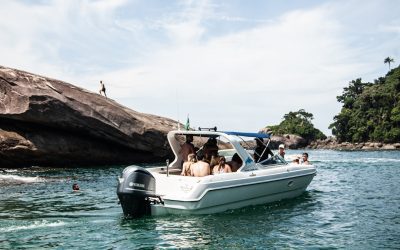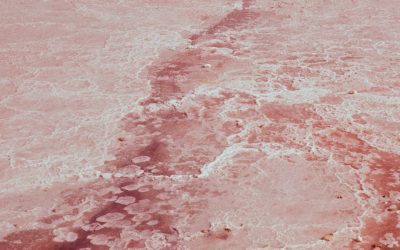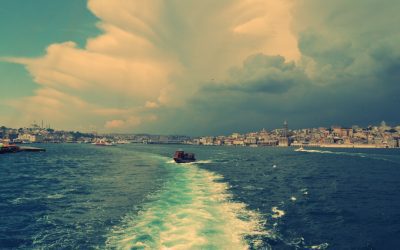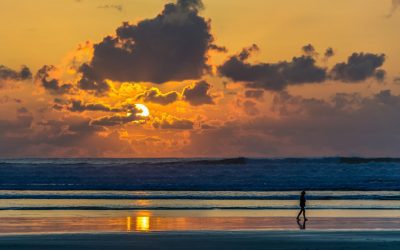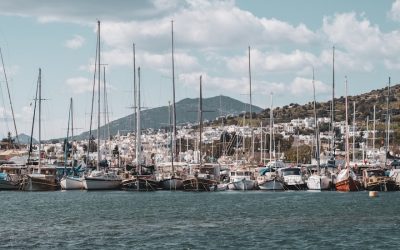Explore the World Through Geography, Natural Resources & Daily History
Clear, reliable and engaging guides that help you understand our planet — from UK geography education to global natural resources and On This Day history events.
Explore, discover, and learn about the wonders of our world! At Earth Site, we’re passionate about bringing geography, history, and science to life for curious minds of all ages. Whether you’re delving into historical events, uncovering the mysteries of the natural world, or seeking interactive resources, you’re in the right place.
Here, you can uncover the stories behind historical events, explore the natural wonders of our planet, and gain valuable insights into how the Earth’s systems shape our daily lives. From the towering peaks of mountain ranges to the far-reaching impacts of human innovation, we aim to make every topic both engaging and informative.
Start your journey of discovery with us today, and let’s make learning an adventure!
What We Cover
Earth Site brings together engaging and accessible educational content designed to help you understand the world, its history, and its natural systems.
🌍 Geography Education (UK & Worldwide)
We publish clear, easy-to-understand geography resources for students, teachers and curious learners. Our guides support geography education in the UK and cover physical geography, climate, ecosystems, population, and global development.
⛏️ Natural Resources & Environmental Geography
Explore detailed country profiles covering natural resources, mining, energy, geology and global environmental challenges. We show how nations manage minerals, water, land and ecosystems, and why these resources matter.
📅 On This Day in History
Every day has a story. Our On This Day history series features major events, anniversaries, traditions, and cultural milestones from around the world — with timelines, context, and fun facts.
TIMELINE
Exploring the Flora and Fauna of US Virgin Islands
The United States Virgin Islands (USVI) is a captivating Caribbean territory that comprises the main islands of Saint Thomas, Saint John, and Saint Croix, along with numerous smaller islets. Renowned for their stunning beaches, crystal-clear waters, and vibrant culture, these islands are a popular destination for tourists seeking both relaxation and adventure. The US Virgin Islands boast a rich history influenced by various colonial powers, including the Danish, who ruled the islands for over 250 years before selling them to the United States in 1917. This historical tapestry is woven into the very fabric of the islands, evident in their architecture, cuisine, and local traditions. The geographical diversity of the US Virgin Islands contributes significantly to their allure. Each island possesses its unique character; Saint Thomas is known for its bustling port and vibrant nightlife, while Saint John is celebrated for its pristine national park and unspoiled natural beauty. Saint Croix, the largest of the three, offers a blend of cultural experiences and historical sites, making it a microcosm of the Caribbean experience. The islands’ tropical climate, characterised by warm temperatures and seasonal rainfall, supports a rich array of ecosystems that are home to an impressive variety of flora and fauna. This natural wealth not only enhances the islands’ aesthetic appeal but also plays a crucial role in their ecological balance. Summary The US Virgin Islands are a group of Caribbean islands known for their stunning natural beauty and rich biodiversity. The diverse flora of the US Virgin Islands includes a wide variety of plant species, from lush tropical rainforests to arid coastal areas. The fascinating fauna of the...
Tropical Zones – Tropical Climate and Tropical Weather in Tropical Countries
Tropical Areas – Tropical Climate and Tropical Weather in Tropical Countries The tropical areas are home to Earth’s most vibrant ecosystems, unique weather patterns, and iconic destinations. This article dives into the science behind tropical climates, their impact on global weather systems, and why regions within the tropics—from lush rainforests to sun-soaked islands—captivate travellers and scientists alike. Whether you’re planning a trip to a tropical paradise or curious about how these regions shape our planet, this guide offers actionable insights and fascinating details you won’t want to miss. Article Outline What Defines a Tropical Climate? How Does the Köppen Climate Classification Categorise Tropical Zones? Tropical Rainforests vs. Tropical Monsoon Climates: What’s the Difference? Why Do Tropical Regions Have Wet and Dry Seasons? How Does Latitude Influence Tropical Weather Systems? What Role Do the Tropics Play in Global Meteorology? Which Countries Offer the Best Tropical Experiences? How Do El Niño and La Niña Affect Tropical Climates? What Unique Plants and Animals Thrive in Tropical Biomes? Are Tropical Regions at Risk Due to Climate Change? 1. What Defines a Tropical Climate? A tropical climate is characterised by high temperatures (averaging 18°C or higher year-round) and significant precipitation, with minimal seasonal temperature variations. These regions lie within the tropics, between 23.5°N (Tropic of Cancer) and 23.5°S (Tropic of Capricorn) latitude. The equator divides this zone, where solar radiation is most intense, fueling consistent warmth and humidity. Key features include wet and dry seasons, dense vegetation like rainforests, and weather phenomena such as monsoons. Unlike temperate regions, tropical areas experience little variation in daylight hours, contributing to stable temperature and humidity levels. Countries like Brazil and Indonesia epitomize...
Exploring the Flora and Fauna of British Virgin Islands
The British Virgin Islands (BVI), an enchanting archipelago located in the Caribbean, is renowned for its stunning natural beauty, crystal-clear waters, and vibrant culture. Comprising around 60 islands and cays, the BVI is a British Overseas Territory that boasts a rich history influenced by indigenous peoples, European colonisation, and a thriving maritime economy. The largest island, Tortola, serves as the administrative and economic hub, while other notable islands include Virgin Gorda, Anegada, and Jost Van Dyke. Each island possesses its unique charm, offering visitors a diverse range of experiences from tranquil beaches to lush mountainous landscapes. The BVI is not only a paradise for beach lovers and sailors but also a haven for nature enthusiasts. The islands are characterised by their tropical climate, which supports a rich tapestry of flora and fauna. The unique geographical features of the BVI, including its volcanic origins and coral reefs, create an environment that is both ecologically significant and visually stunning. This article delves into the diverse plant and animal life found in the British Virgin Islands, the ongoing conservation efforts to protect these natural resources, and the best locations for exploring this Caribbean gem. Summary The British Virgin Islands are a group of 60 islands known for their stunning natural beauty and rich biodiversity. The flora of the British Virgin Islands includes a variety of tropical plants such as orchids, hibiscus, and frangipani. The fauna of the British Virgin Islands is diverse, with species such as iguanas, flamingos, and sea turtles inhabiting the islands. Conservation efforts in the British Virgin Islands focus on protecting the delicate marine and terrestrial ecosystems, including the...
Sea of Galilee
The Sea of Galilee, known in Hebrew as Lake Kinneret, is a freshwater lake located in northern Israel. It is the largest freshwater lake in the country and holds a prominent place in both the geographical and cultural landscape of the region. Nestled between the Golan Heights to the east and the Galilee mountains to the west, the lake spans approximately 21 kilometres in length and 13 kilometres in width, with a maximum depth of around 43 metres. Its significance extends beyond mere geography; it is a site steeped in history, spirituality, and natural beauty. The Sea of Galilee has been a focal point for various civilisations throughout history, serving as a vital resource for agriculture, trade, and transportation. Its waters are fed by the Jordan River, which flows from the north and exits to the south, creating a dynamic ecosystem that supports diverse flora and fauna. The lake’s serene beauty and historical richness attract visitors from around the globe, making it a key destination for both pilgrims and tourists alike. As we delve deeper into its geography, history, and cultural significance, we uncover layers of meaning that contribute to the Sea of Galilee’s enduring legacy. Summary The Sea of Galilee, also known as Lake Tiberias, is a freshwater lake in Israel and the lowest freshwater lake on Earth. The Sea of Galilee is surrounded by hills and mountains, with the Jordan River flowing through it and the Golan Heights to the east. The Sea of Galilee has been a site of historical significance, with many ancient cities and archaeological sites surrounding its shores. The Sea of Galilee holds...
Dead Sea
The Dead Sea, a remarkable body of water situated at the lowest point on Earth, has captivated the attention of scholars, tourists, and health enthusiasts alike for centuries. Nestled between Jordan to the east and Israel and Palestine to the west, this saline lake is renowned not only for its extreme salinity but also for its historical and cultural significance. The Dead Sea is a unique ecosystem that has been shaped by geological processes over millennia, resulting in a landscape that is both stark and beautiful. Its waters, rich in minerals, have been sought after for their therapeutic properties, making the Dead Sea a focal point for wellness tourism. The name “Dead Sea” is derived from the fact that its high salinity prevents most aquatic life from thriving within its waters. This characteristic has led to a perception of desolation; however, the surrounding region is teeming with life and history. The Dead Sea has been a source of fascination since ancient times, mentioned in biblical texts and revered by various cultures for its healing properties. Today, it continues to draw visitors from around the globe, eager to experience its unique environment and rich heritage. Summary The Dead Sea is a saltwater lake bordered by Jordan to the east and Israel and Palestine to the west. It is the lowest point on Earth and is known for its high salt and mineral content, making it impossible for most forms of life to exist in its waters. The unique properties of the Dead Sea, including its high salt and mineral content, have made it a popular destination for health and wellness...
Marmara Sea
The Marmara Sea, a unique body of water that connects the Aegean Sea to the Black Sea, serves as a vital geographical and ecological link between Europe and Asia. This relatively small sea, measuring approximately 11,350 square kilometres, is not only significant for its strategic location but also for its rich biodiversity and historical importance. The Marmara Sea is often overshadowed by its larger counterparts, yet it plays a crucial role in the maritime activities of Turkey and the surrounding regions. Its waters are a blend of saltwater from the Aegean and freshwater from the Black Sea, creating a unique marine environment that supports a variety of life forms. The sea is bordered by several major cities, including Istanbul, which straddles both continents and serves as a cultural and economic hub. The Marmara Sea is also home to numerous islands, such as the Princes’ Islands, which are popular destinations for both locals and tourists. The interplay of natural beauty and human activity makes the Marmara Sea a fascinating subject of study, revealing insights into the ecological balance and the impact of human intervention on marine environments. Summary The Marmara Sea is a small inland sea located in northwestern Turkey, connecting the Black Sea to the Aegean Sea. The Marmara Sea is surrounded by the densely populated and industrialized Marmara region, making it a hub for economic activities and trade. The sea is home to a diverse range of marine life, including dolphins, sea turtles, and various species of fish and crustaceans. Human activities such as shipping, fishing, and tourism have had a significant impact on the Marmara Sea, leading...
Ligurian Sea
The Ligurian Sea, a picturesque body of water nestled between the Italian Riviera and the French coastline, is a significant part of the Mediterranean Sea. It is bordered by the regions of Liguria in Italy and Provence-Alpes-Côte d’Azur in France, making it a vital maritime corridor that has shaped the cultural and economic landscapes of the surrounding areas. The sea is not only known for its stunning vistas and charming coastal towns but also for its rich biodiversity and historical importance. As a crucial link in maritime trade routes, the Ligurian Sea has been a witness to centuries of human activity, from ancient seafaring to modern tourism. The Ligurian Sea is often celebrated for its dramatic cliffs, azure waters, and vibrant marine ecosystems. It serves as a habitat for numerous species of fish and marine mammals, while also being a popular destination for recreational activities such as sailing, diving, and swimming. The sea’s unique geographical features, including its deep basins and narrow straits, contribute to its ecological richness and make it an area of interest for scientists and environmentalists alike. As we delve deeper into the various aspects of the Ligurian Sea, we will uncover its geographical features, marine life, environmental challenges, cultural significance, economic activities, recreational opportunities, and future prospects. Summary The Ligurian Sea is located in the northwestern part of the Mediterranean Sea, bordered by Italy, France, and Monaco. It is characterized by its deep blue waters, rugged coastline, and picturesque coastal towns, making it a popular tourist destination. The Ligurian Sea is home to a diverse range of marine life, including dolphins, whales, and various species...
Tyrrhenian Sea
The Tyrrhenian Sea, a prominent body of water in the central Mediterranean, is bordered by the western coast of Italy, the islands of Sardinia and Corsica, and the eastern shores of the Italian peninsula. This sea is not only a geographical landmark but also a cultural and historical nexus that has shaped the lives of countless communities over millennia. Its name is derived from the ancient Etruscans, known as the Tyrrhenians, who inhabited parts of Italy before the rise of the Roman Empire. The Tyrrhenian Sea serves as a vital maritime route, connecting various regions and facilitating trade, travel, and cultural exchange. The sea’s significance extends beyond its strategic location; it is a rich tapestry of biodiversity and natural beauty. The interplay of land and sea creates a unique environment that supports a wide array of marine life and ecosystems. The Tyrrhenian Sea is also a focal point for various human activities, from fishing to tourism, which have both positive and negative impacts on its health and sustainability. Understanding the complexities of this sea is essential for appreciating its role in the Mediterranean region and the broader ecological landscape. Summary The Tyrrhenian Sea is located in the Mediterranean and is bordered by the Italian peninsula, the island of Sardinia, and the island of Corsica. The Tyrrhenian Sea is known for its deep trenches, volcanic activity, and rich biodiversity, making it a popular destination for divers and marine enthusiasts. The Tyrrhenian Sea is home to a variety of marine life, including dolphins, whales, sea turtles, and a wide range of fish species. Human activities in the Tyrrhenian Sea include fishing,...
Ionian Sea
The Ionian Sea, a significant body of water in the Mediterranean, is renowned for its stunning landscapes, rich history, and vibrant marine ecosystems. Nestled between the western coast of Greece and the eastern shores of Italy, this sea has been a crucial maritime route since ancient times, facilitating trade, cultural exchange, and exploration. The Ionian Sea is not merely a geographical feature; it embodies a tapestry of human experience, from the ancient Greeks who revered its waters to modern-day tourists seeking its beauty and tranquillity. The sea is often celebrated for its crystal-clear waters, picturesque islands, and charming coastal towns. It has inspired countless artists, poets, and writers throughout history, serving as a backdrop for both mythological tales and real-life adventures. The Ionian Sea is also a vital ecological zone, home to diverse marine life and unique habitats that contribute to the overall health of the Mediterranean ecosystem. As we delve deeper into the various aspects of the Ionian Sea, we will uncover its geographical significance, climatic conditions, rich biodiversity, historical context, and the pressing environmental challenges it faces today. Summary The Ionian Sea is located in the Mediterranean and is bordered by several countries including Italy, Albania, and Greece. The climate in the Ionian Sea is typically mild with hot, dry summers and mild, wet winters, making it an ideal destination for tourists. The marine life in the Ionian Sea is diverse, with a variety of fish, dolphins, and sea turtles inhabiting its waters. The Ionian Sea has a rich history and culture, with influences from ancient Greek, Roman, and Byzantine civilizations. Tourism in the Ionian Sea is...
Exploring the Biodiversity of Venezuela: The Flora and Fauna
Venezuela, a country located on the northern coast of South America, is renowned for its extraordinary biodiversity, which is a product of its varied ecosystems and geographical features. Spanning from the Andes mountains in the west to the vast plains of the Llanos and the lush Amazon rainforest in the south, Venezuela’s landscapes are as diverse as its flora and fauna. The country is home to an estimated 25,000 species of plants, 1,400 species of birds, and a multitude of mammals, reptiles, amphibians, and insects. This rich tapestry of life is not only vital for the ecological balance but also plays a significant role in the cultural and economic fabric of the nation. The unique geographical features of Venezuela contribute significantly to its biodiversity. The country boasts the world’s highest waterfall, Angel Falls, and the expansive Gran Sabana region, characterised by its table-top mountains known as tepuis. These tepuis are often referred to as “islands in the sky” due to their isolated ecosystems, which have evolved over millions of years. The combination of altitude, climate variations, and distinct habitats has led to a high degree of endemism, with many species found nowhere else on Earth. Understanding and preserving this biodiversity is crucial not only for environmental health but also for the livelihoods of local communities that depend on these natural resources. Summary Venezuela is home to a rich and diverse range of flora and fauna, making it a hotspot for biodiversity. The diverse flora of Venezuela includes over 25,000 species of plants, with a large number of endemic species found nowhere else in the world. Venezuela’s rich fauna includes...
Aegean Sea
The Aegean Sea, a shimmering expanse of water nestled between the mainland of Greece and the western coast of Turkey, is a region steeped in history and natural beauty. This sea, which is part of the larger Mediterranean basin, has long been a vital artery for trade, culture, and communication among the ancient civilisations that flourished in its vicinity. The Aegean is not merely a body of water; it is a mosaic of islands, each with its own unique character and history, contributing to the rich tapestry of human experience that has unfolded over millennia. The Aegean Sea is often celebrated for its stunning landscapes, characterised by rugged coastlines, crystal-clear waters, and an abundance of islands, many of which are dotted with charming villages and archaeological sites. The sea has played a pivotal role in shaping the identities of the nations that border it, influencing everything from art and literature to politics and trade. As we delve deeper into the geographical features, historical significance, and ecological diversity of the Aegean Sea, we uncover not only its natural splendour but also its profound impact on human civilisation. Summary The Aegean Sea is located in the eastern Mediterranean and is home to thousands of islands, making it a popular tourist destination. The Aegean Sea is characterized by its deep blue waters, numerous bays and peninsulas, and a diverse range of marine life. The Aegean Sea has been a significant area throughout history, with ancient civilizations such as the Minoans, Mycenaeans, and Greeks all leaving their mark on the region. The Aegean Sea is home to a rich variety of marine life,...
Adriatic Sea
The Adriatic Sea, a striking body of water nestled between the Italian Peninsula and the Balkan Peninsula, has long captivated the imagination of those who dwell along its shores. Stretching approximately 800 kilometres from the Gulf of Venice in the north to the Strait of Otranto in the south, it serves as a vital conduit for trade, culture, and biodiversity. The sea is not merely a geographical feature; it is a historical tapestry woven with the threads of ancient civilisations, maritime trade routes, and cultural exchanges that have shaped the identities of the nations bordering it. The Adriatic has been a witness to the rise and fall of empires, a battleground for naval conflicts, and a sanctuary for diverse marine life. The significance of the Adriatic Sea extends beyond its physical dimensions. It plays a crucial role in the climate and ecology of the surrounding regions, influencing weather patterns and supporting a rich array of flora and fauna. The sea’s unique characteristics, including its varying depths and salinity levels, create distinct habitats that are home to numerous species. As we delve deeper into the intricacies of the Adriatic Sea, we will explore its geography, marine life, human activities, environmental challenges, and its enduring cultural legacy. Summary The Adriatic Sea is a body of water in the Mediterranean region, bordered by Italy, Slovenia, Croatia, Bosnia and Herzegovina, Montenegro, and Albania. The Adriatic Sea is home to a diverse range of marine life, including dolphins, sea turtles, and a variety of fish species. Human activities in the Adriatic Sea, such as fishing and tourism, play a significant role in the region’s...


